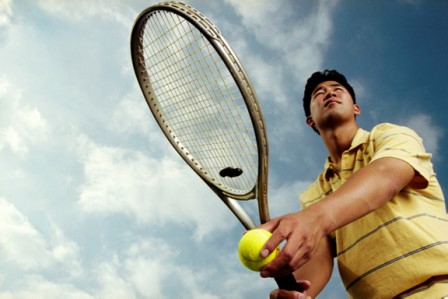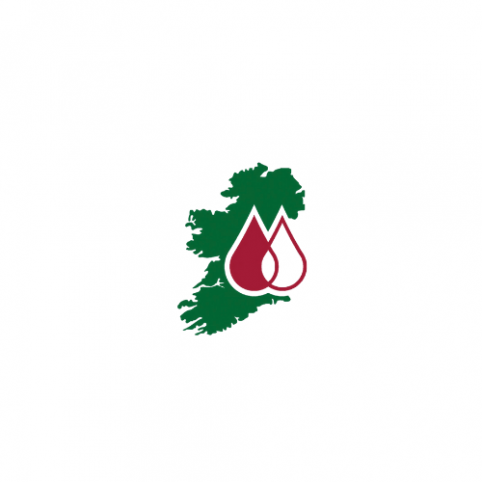People with haemophilia, or the parents of children with haemophilia, sometimes feel overwhelmed by the medical diagnosis. When this happens it is only too easy to see all the drawbacks, all the threats, all the dangers and all the worries that a disorder like haemophilia suggests. The reality is different. People with haemophilia should not be frightened of taking physical exercise and of actively participating in sport. Indeed, they should be encouraged to do so.
Why Sport?
When you are physically fit you are more resilient to the stresses and strains of everyday life than someone who takes no exercise. This is especially true if you have haemophilia. The enemies of haemophilia include muscle weakness and lack of flexibility and coordination, all of which increase the likelihood of joint damage and eventual arthritis. When you have haemophilia participation in sport has the same benefits as it does for anyone else. When physical activity is practised regularly it helps mental concentration, exercises, tones up muscles and increases skill, coordination, and stamina all of which enhance your everyday life. Moreover, you learn about team spirit and comradeship and may well gain a sense of achievement previously lacking in your life. Some people may think or tell you that sport involves unnecessary risk, but you should learn to decide for yourself which risks are worth taking and which are not. Everyone can enjoy sport, no matter where they live.
Obviously, everyone is different and individual circumstances vary widely across the world. But the choice is so wide, and the need for people with haemophilia to keep themselves as healthy as possible so great, that some form of physical exercise practised regularly is recommended for everyone.
Things to consider in addition to the availability of treatment are the severity of your haemophilia, the presence of clotting factor inhibitors, whether any of your joints are affected by arthritis, and your general health. In the end, common sense is the best guide when deciding on whether to go for it or not.
Choice of Sport
The choice of a particular sport is, of course, a very individual matter. However, there are common factors that influence choice. They include enjoyment, capability, previous experience, and the attitude of others.
Enjoyment
Unless you enjoy an activity there is little point in continuing to do it. It becomes a chore and ultimately can put you off sport for life. However, boring exercise regimes are sometimes necessary in order to gain full recovery from surgery, a sports injury or a run of bleeds. It is important to remember that these regimes are not peculiar to haemophilia. They are common to everyone who participates in sport, from club runners to Olympic athletes. They are part of the discipline of sport which has to be learned.
Capability
Some people are good at activities that require endurance (long distance events), others excel at activities that require good hand-eye coordination (racquet sports). But no-one knows what they are capable of until they try it.
Previous Experience
Hopefully during your childhood you will have been encouraged to participate in physical activity and sport. By your teens, you should know which activities you enjoy. Without experience, you cannot know which of these are likely to result in bleeds, or how to control bleeds if they occur during a sport you have set your heart on. On the whole, the greater the range of activities tried, the greater the chance of finding the right one for you.
Attitude of others
Attitude is crucial. If those with influence seek to overprotect the growing boy with haemophilia he will not mature as an individual able to make informed decisions about his life. You should remember that the attitude of others may depend as much on you as on them. Honesty and a willingness to talk things through are vital. Don\’t hide behind your haemophilia. Parents of children with haemophilia should be encouraged to let them grow and develop normally alongside their brothers and sisters and friends. Play should only be restricted by the bounds of common sense, as with any child. Positive influences encouraging self-reliance and the development of a normal body image will be beneficial. If a child is being excluded from physical activity for any reason it is important that his advisors know as soon as possible.
Which Sport?
Although the topic ‘should someone with haemophilia participate in sport or not’? sometimes results in vigorous debate, publications on haemophilia and sport are fewer than might be expected. Remember that there are differences between physical activity in order to keep fit, physical activity in order to increase strength or help recovery from injury, and the physical activity of sports pursued purely for enjoyment. For instance, if keeping fit is the prime objective you need to exercise three or four times a week. If you need to build up muscle after a run of bleeds you will need to concentrate on strength work, preferably under supervision, rather than relying on activities like walking.
Category A – Low Risk
Cycling Fishing
Hiking Swimming
Tai Chi Walking
Category B – Medium Risk

Athletics Baseball
Basketball Gymnastics
Horseback Riding Jogging
Roller Skating Rowing
Running Skiing
Soccer Tennis
Track & Field Volleyball
Waterskiing Weight Training
Category C – High Risk
GAA Ice Hockey
Hurling Motor Cycling
Rugby Wrestling
Boxing Martial Arts
Before, During and after Sport
Good preparation and relaxation can help to prevent injuries. Stretching is essential before and after exercise.
Warm-up
Whereas young children are able to fall into and out of trouble without any problem, the older we get the more likely we are to injure ourselves unless we prepare our bodies for physical activity. A series of stretching and mobility exercises, in which the body is put through its range of activity, is an essential part of any exercise programme. Without such a routine painful joints and pulled muscles are inevitable. The duration of warm-up will vary from person to person, but should not be less than 10 to 15 minutes.
Monitoring your response to exercise
Variation in your pulse rate gives you a good measure of how your body responds to exercise. Another measure of your body\’s response to exercise worth noting is that if you can\’t talk to someone when you are working out, you are probably overdoing it. You should be able to carry on a conversation without too much effort if you can\’t slow down!
Cool-down
After strenuous exercise, the body needs to relax. Pulse rate respiratory rate and temperature fall. Muscles and joints return to their resting state. This process needs to be gradual. The body needs to be put through a regimen similar to \’warm-up\’ with gentle stretching and joint range of movement exercises. Fluid replacement and a hot bath or shower help. Take time out to enjoy the sense of well-being that relaxation after physical effort should bring.
Prevention of Injury
No sport is without risk but this can be reduced by following simple guidelines. Most of these are common sense and apply to everyone.
A. You should know the rules of chosen sport and abide by them.
B. You should learn the skills required of you by taking regular teaching sessions with experts.
C. You should wear clothing, and protection appropriate to your sport.
D. You should not play on if injured.
E. You should choose the right footwear.
If an activity regularly provokes bleeding a cause should be sought. Changes in footwear or technique or a period of rest and retraining may be effective. If the problem persists you should consider a change to another sport.
[This article was extracted from WFH publication ‘Go For It’]
Advice
Be sensible, if you are going to undertake a new activity, a new sport or a new regime for example: regular sessions at a gym, then you should seek the advice of your centre director or physiotherapist who can assist you in optimising the regime to maximise its benefit to yourself while minimising the risk of bleeding or injury.

